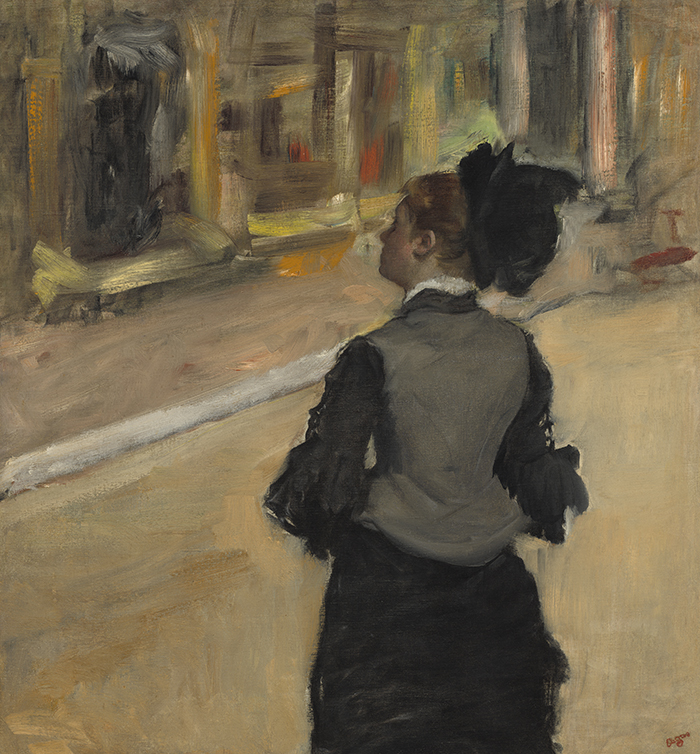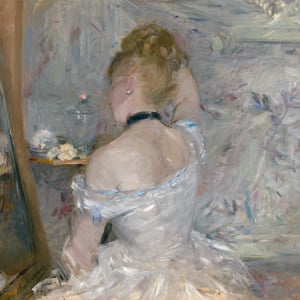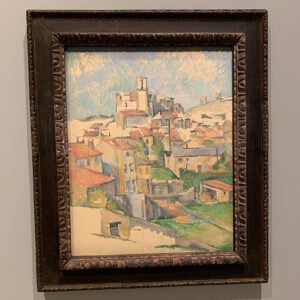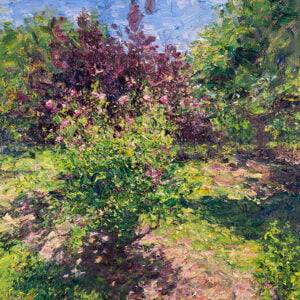For your inspiration today is Visit to a Museum by Edgar Degas.

(Click here to download a high-resolution photo of the painting.)
Some key observations:
- The painting has two distinct parts: the woman pursuing the museum and the museum itself. Degas used a unique approach for each part. For the woman, he used fine rendering, hard edges, and dark, muted colors. For the gallery itself, he used vague detail, pastel colors, and soft edges. A key feature of the painting is the interaction and contrast between these two parts. Also, despite the differing approaches, there’s a sense of cohesion between the woman and the gallery. This is important for making the painting appear as one, rather than as an arrangement of parts.
- The way Degas painted the woman places her as the focal point. The vague artwork falls back in attention.
Tip: One of your powers as an artist is being able to control where people look in your painting. You can do this by painting certain areas with more clarity, contrast, and detail. Consider what the painting would look like had Degas painted the museum with fine rendering and clarity and the woman with vague, simplified detail. In that case, there would be a stronger pull on our attention toward the museum and the artwork on its walls.
- There’s an interesting play between the curved lines and shapes that represent the woman and the rigid, geometric lines and shapes that represent the museum. The museum makes the woman appear more fluid and lively by comparison.
- A strong diagonal line represents the edge between the museum wall and floor. This diagonal plays an important role in conveying depth and perspective. Think about what the painting would look like had Degas painted directly facing the wall. Flat and still I imagine. Diagonals and curves are important! They inject life and depth into your work.
- If you zoom in on the painting, you’ll see Degas’ brushwork gently follows the outline of the woman. This helps reiterate her presence. I feel it also adds a sense of movement to the painting. Remember, even in still and quiet scenes, there’s almost always some movement.
If you ever want to learn more about master paintings like this, you might be interested in Composition Breakdown.
Happy painting!
Dan Scott
drawpaintacademy.com






